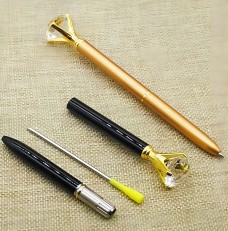Table of Contents
Toggle18 Fascinating Pen Facts: Unveiling the Mighty Tool of Expression
In our digital age, the humble pen might seem like a relic of the past. Yet, this mighty tool of expression holds a wealth of history, innovation, and fascination that continues to impact our lives. Let’s delve into 18 interesting facts about pens, uncovering the layers of intrigue that surround this everyday object.

The Evolution of the Pen: A Journey Through Time
- The Birth of Writing Instruments: The earliest pens were used by ancient civilizations around 3000 B.C., consisting of reed straws dipped in ink.
- The Quill Pen Era: For centuries, quill pens, made from bird feathers, were the primary writing instruments, symbolizing elegance and scholarly pursuits.
Modern Pens: The Revolution Begins
- The Invention of the Fountain Pen: In the 19th century, the fountain pen was invented, revolutionizing writing with its ink reservoir.
- The Ballpoint Pen: Patented in 1938, the ballpoint pen brought affordability and convenience to writing, becoming a global staple.
The Science and Engineering Behind Pens
- Ink Composition: Pen ink is a blend of dyes, solvents, and lubricants, carefully formulated to provide the perfect writing experience.
- Ballpoint Mechanics: The ball at the tip of a ballpoint pen distributes ink evenly, allowing for smooth, consistent writing.
Pens in Culture and Society
- Symbols of Power and Authority: In many cultures, pens symbolize knowledge, authority, and the power of the written word.
- Presidential Signings: U.S. Presidents often use multiple pens to sign important documents, each pen becoming a historical artifact.
The Art of Penmanship
- Calligraphy: The art of beautiful handwriting, calligraphy showcases the aesthetic possibilities of pen and ink.
- Handwriting Variations: Handwriting is as unique as a fingerprint, with each person’s style influenced by their pen grip, pressure, and movement.
Innovations and Trends in the Pen Industry
- Eco-Friendly Pens: With sustainability in focus, the market now offers pens made from recycled materials and refillable designs.
- Smart Pens: Bridging the gap between digital and analog, smart pens digitize handwritten notes, making them searchable and shareable.
Collectible Pens: A Niche Hobby
- Luxury Pen Brands: Brands like Montblanc and Parker offer high-end pens, often considered status symbols and collectors’ items.
- Limited Editions: Collectors seek out limited edition pens, which can be highly valuable due to their rarity and craftsmanship.
Fun Facts and Oddities
- The Most Expensive Pen: The Fulgor Nocturnus by Tibaldi, worth over $8 million, is adorned with black diamonds, making it the world’s most expensive pen.
- Longest Writing Pens: Certain ballpoint pens are designed to write for over 9000 meters, showcasing advancements in ink efficiency.
Pens in Education and Learning
- Learning Tool: Research suggests that writing notes by hand enhances memory retention and understanding.
- Inclusivity in Design: Pens are now designed with ergonomic features to accommodate users with different needs, promoting inclusivity.
The Pen’s Enduring Legacy
Despite the digital revolution, pens remain irreplaceable tools of creativity, expression, and personal identity. They bridge our thoughts with the physical world, allowing us to leave a tangible mark on the pages of history. As we continue to innovate and adapt, the pen’s story is far from over, promising new chapters filled with wonder, utility, and the enduring power of the written word.
FAQs
- What makes a pen eco-friendly? Eco-friendly pens are made from sustainable materials and designed to be refillable or biodegradable, reducing waste.
- Can handwriting improve with practice? Yes, with regular practice and attention to technique, anyone can improve their handwriting.
- Why are luxury pens considered valuable? Luxury pens are valued for their craftsmanship, materials, design, and brand heritage, making them both functional tools and works of art.
- How do smart pens work? Smart pens capture the motion of writing and digitize handwritten notes, often syncing them with apps for easy access and sharing.
- What’s the future of pens? The future of pens likely includes further innovations in sustainability, digital integration, and personalized design to meet the evolving needs of users.




